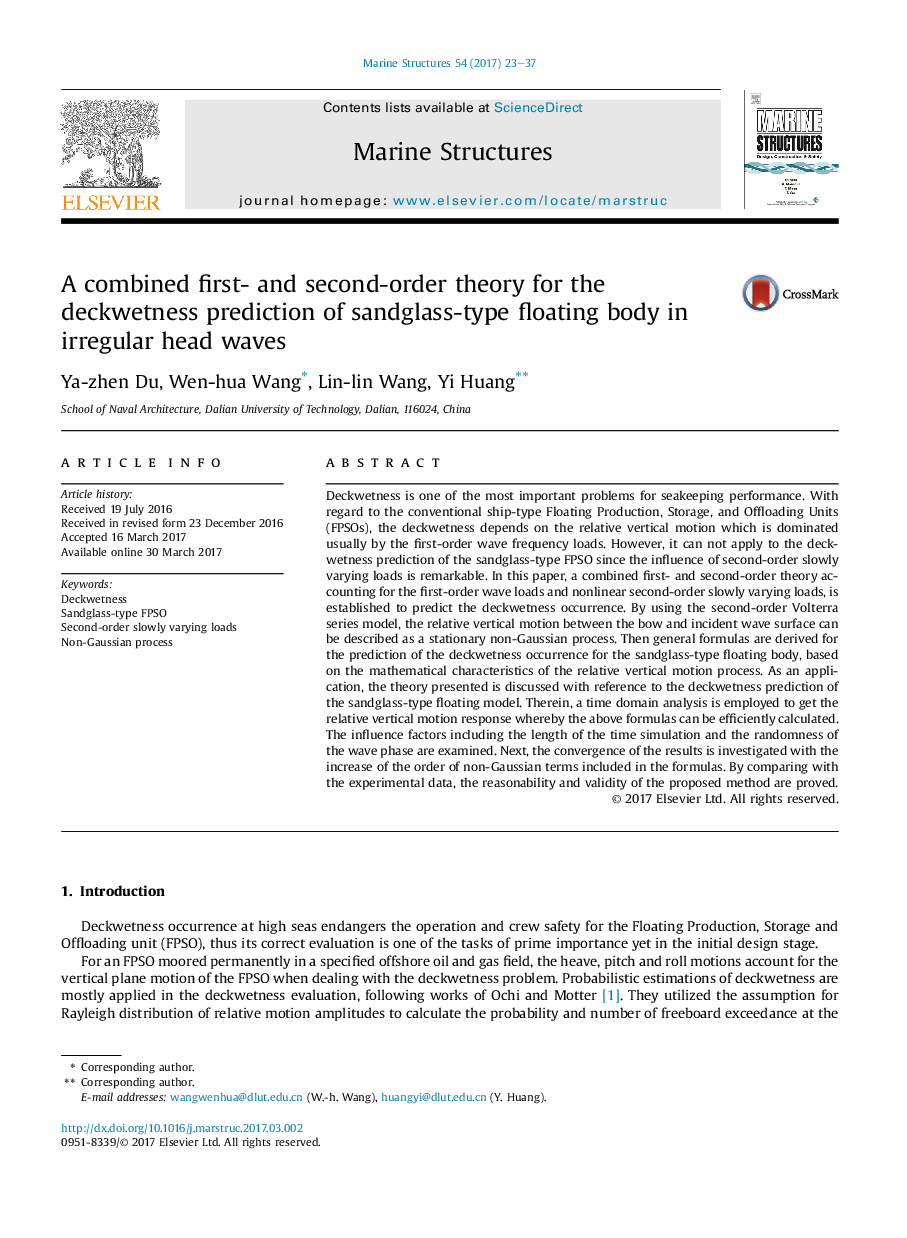| Article ID | Journal | Published Year | Pages | File Type |
|---|---|---|---|---|
| 4925019 | Marine Structures | 2017 | 15 Pages |
Abstract
Deckwetness is one of the most important problems for seakeeping performance. With regard to the conventional ship-type Floating Production, Storage, and Offloading Units (FPSOs), the deckwetness depends on the relative vertical motion which is dominated usually by the first-order wave frequency loads. However, it can not apply to the deckwetness prediction of the sandglass-type FPSO since the influence of second-order slowly varying loads is remarkable. In this paper, a combined first- and second-order theory accounting for the first-order wave loads and nonlinear second-order slowly varying loads, is established to predict the deckwetness occurrence. By using the second-order Volterra series model, the relative vertical motion between the bow and incident wave surface can be described as a stationary non-Gaussian process. Then general formulas are derived for the prediction of the deckwetness occurrence for the sandglass-type floating body, based on the mathematical characteristics of the relative vertical motion process. As an application, the theory presented is discussed with reference to the deckwetness prediction of the sandglass-type floating model. Therein, a time domain analysis is employed to get the relative vertical motion response whereby the above formulas can be efficiently calculated. The influence factors including the length of the time simulation and the randomness of the wave phase are examined. Next, the convergence of the results is investigated with the increase of the order of non-Gaussian terms included in the formulas. By comparing with the experimental data, the reasonability and validity of the proposed method are proved.
Keywords
Related Topics
Physical Sciences and Engineering
Engineering
Civil and Structural Engineering
Authors
Ya-zhen Du, Wen-hua Wang, Lin-lin Wang, Yi Huang,
